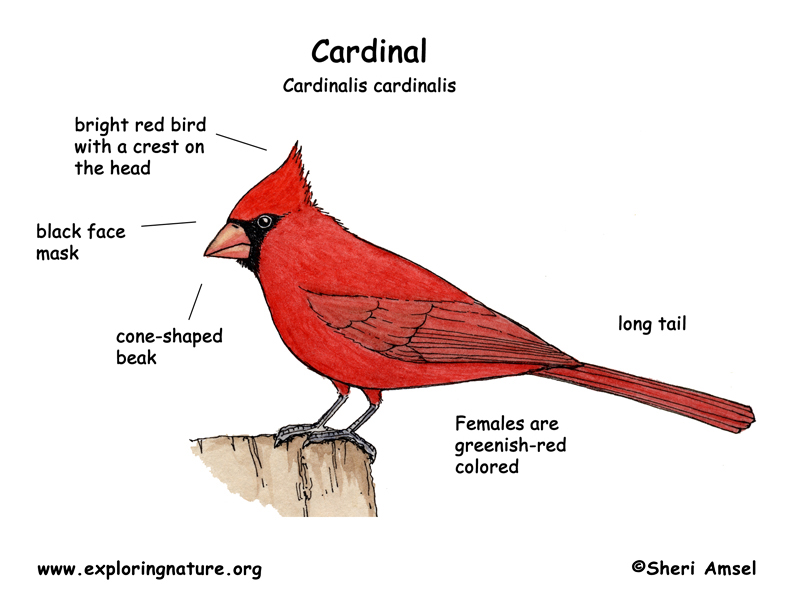

Northern Cardinals are found in the eastern U.S. and southern Canada down to the Gulf of Mexico and west to Arizona and Southern California.
They like to live in thickets, the edges of woodland, suburban gardens and at bird feeders.
Males are bright red bird with a crest on their head that they can make go up and down. They have a cone-shaped beak. Females are greenish red colored.
They visit bird feeders all winter. Males protect their territory and will fight other males. They will attack their own reflection in a window. Both males and females sing.
They eat seeds, grains, fruit and insects.
They nest from March to August, sometimes having as many as 3 nests of babies. These are made of small twigs and grass and built in a bush. The female lays 3-4 white to greenish eggs. They hatch in 12-13 days. After the babies hatch, the males take care of them so the female can start the next batch.
Kingdom: Animalia
Phylum: Chordata
Class: Aves
Order: Passeriformes
Family: Cardinalidae
Genus: Cardinalis
Species: C. cardinalis
When you research information you must cite the reference. Citing for websites is different from citing from books, magazines and periodicals. The style of citing shown here is from the MLA Style Citations (Modern Language Association).
When citing a WEBSITE the general format is as follows.
Author Last Name, First Name(s). "Title: Subtitle of Part of Web Page, if appropriate." Title: Subtitle: Section of Page if appropriate. Sponsoring/Publishing Agency, If Given. Additional significant descriptive information. Date of Electronic Publication or other Date, such as Last Updated. Day Month Year of access < URL >.
Amsel, Sheri. "Cardinal (Northern)" Exploring Nature Educational Resource ©2005-2024. December 13, 2024
< http://www.exploringnature.org/db/view/Cardinal >

